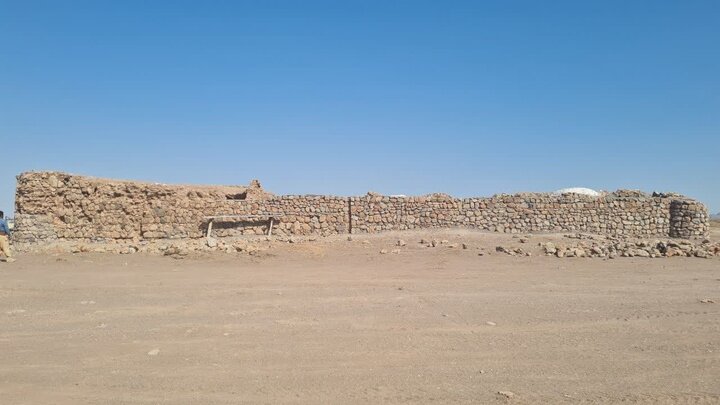Safavid-era caravanserai restored to former glory

TEHRAN-A restoration project on the Safavid era (1501-1736) Sharifabad caravanserai in the city of Mayamey in north-central Semnan province, has come to an end, a local tourism official has said.
The project involved repairing the damaged parts, strengthening the structure and restoring its rooftop and flooring, Seyyed Mohammad Sadeq Razavian explained on Monday.
The historical structure has been inscribed on the national heritage list.
Earlier in September, a selection of 54 centuries-old roadside inns won a UNESCO label under the name: The Persian Caravanserai. The registration was made at the 45th session of the UNESCO World Heritage Committee in Saudi Arabia’s capital Riyadh, after carefully examining the proposed caravanserais located in 24 provinces across the country.
Caravansary (also Caravanserai or Caravansaray) is a building that served as the inn of the Orient, providing accommodation for commercial, pilgrim, postal, and especially official travelers.
According to Encyclopedia Iranica, from the number of surviving caravansaries and their sizes, it is clear that in Safavid and Qajar times there was a state architectural department that was specifically concerned with the construction of caravansaries and stations on the overland routes. Furthermore, in the cities, several caravansaries were erected as lodging houses, depots, and commercial offices in the vicinity of the bazaars.
A typical caravansary consists of a square or rectangular plan centered around a courtyard with only one entrance and arrangements for defense if necessary. Whether fortified or not, it at least provided security against beasts of prey and attacks by brigands.
The earliest caravanserais in Iran were built during the Achaemenid era (550 - 330 BC). Centuries later, when Shah Abbas I assumed power from 1588–to 1629, he ordered the construction of a network of caravanserais across the country.
For many travelers, staying in or even visiting a centuries-old caravanserai can be a wide experience; they have an opportunity to feel the past, a time travel back to a forgotten age.
Such roadside inns were once constructed along ancient caravan routes in the Muslim world to shelter people, their goods, and animals. The former Silk Roads may be the most famous example dotted by caravanserais.
Cozy chambers that are meticulously laid out around a vast courtyard may easily evoke spirits of the past. It’s not hard to fancy the hustle and bustle of merchants bargaining on prices, recounting their arduous journeys to one another while their camels chewing hay! You can also conceive the idea of local architectural style and material in its heyday.
It is not hard to fancy the hustle and bustle of merchants bargaining on prices, recounting their arduous journeys to one another while their camels chewing hay!
Passing major roads in the country, one may see crumbling caravanserais, many of which were abandoned for ages. In the Information Age, such guest houses have largely lost their actual usage.
However, a couple of years ago, the Iran tourism ministry introduced a scheme to keep them alive and profitable; tens of caravanserais are ceded to private investors for better maintenance. Now, some are exclusively renovated and repurposed into boutique hotels and tourist lodgings.
They often had massive portals supported by elevated load-bearing walls. Guest rooms were constructed around the courtyard and stables behind them with doors in the corners of the yard.
SAB/
Leave a Comment